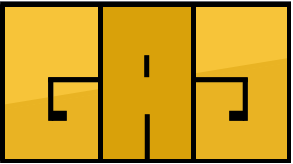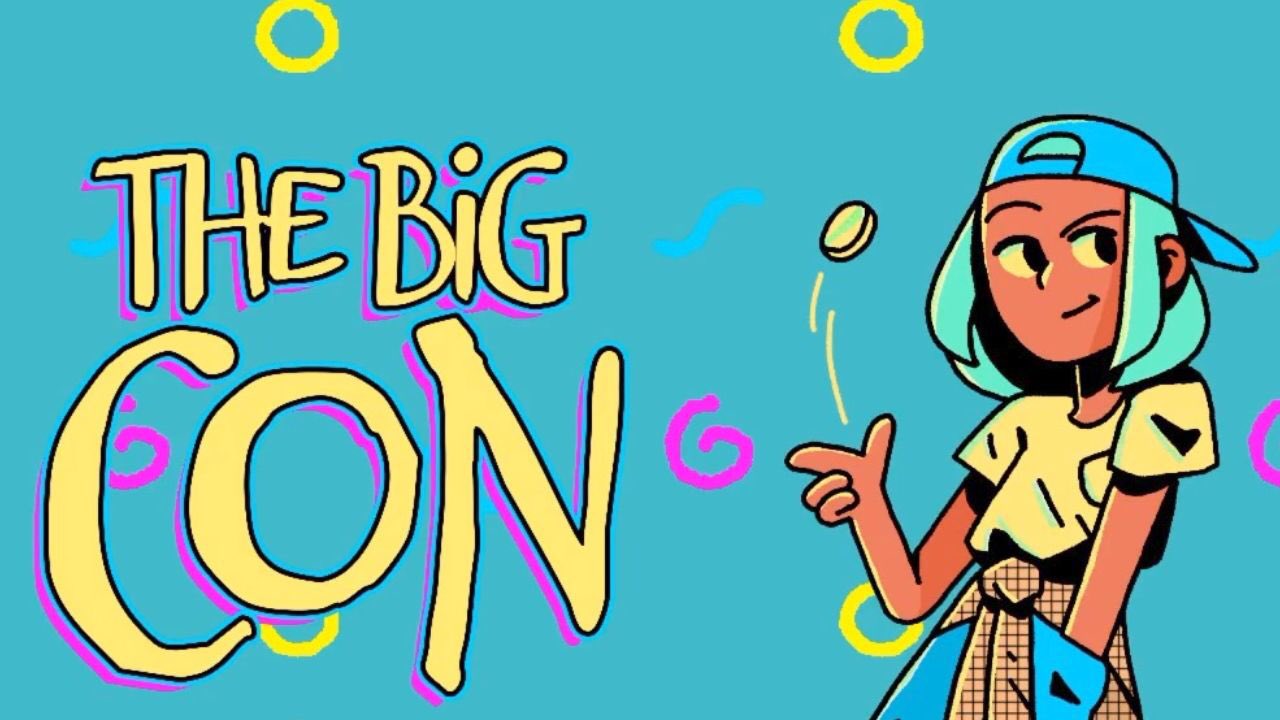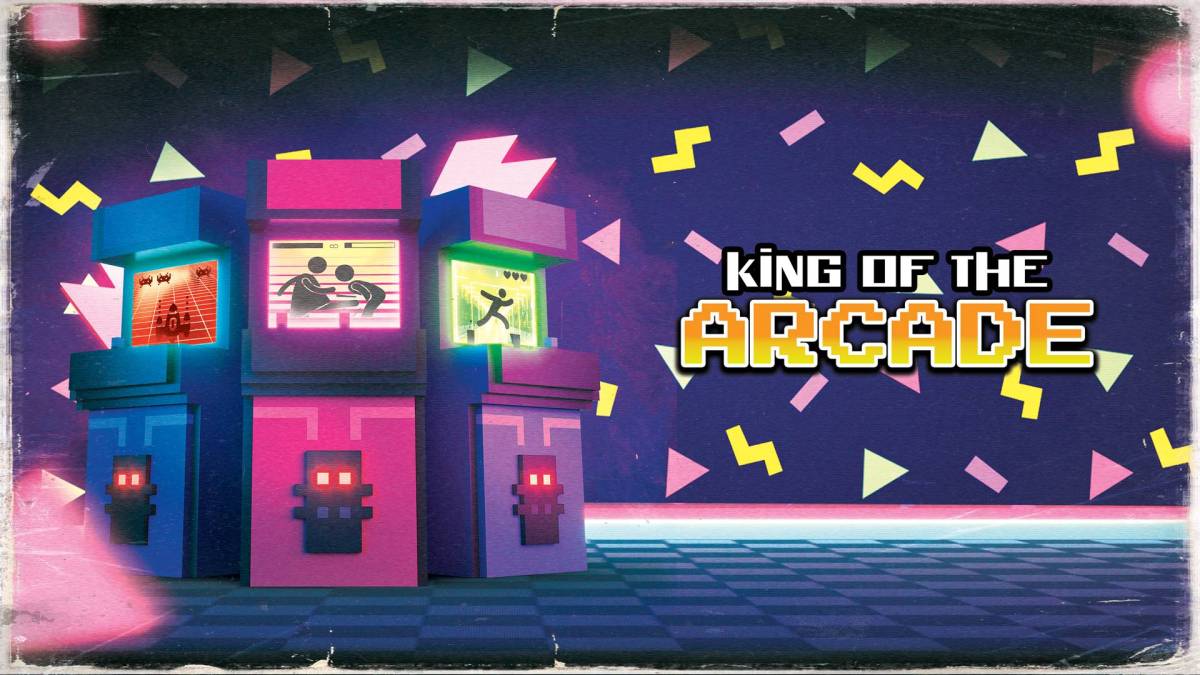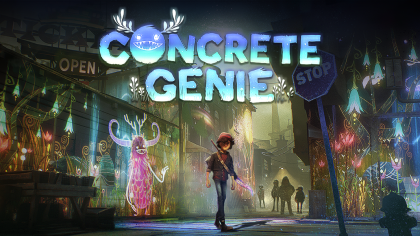
Platforms: PlayStation 4
I’ve always had a great love and deep appreciation for art of all forms. Drawing and doodling have been some of my favorite hobbies for years, and when I was in grade school, I was quite the artist. Sadly, I never honed or improved those skills, and to this day, I still have the artistic talent of a seven year old. In recent years I’ve found that I’ve resorted to living vicariously through other people’s abilities, in the form of watching videos and other less interactive means, to get my artistic fix, which isn’t so satisfying. Concrete Genie appeared to be a game that focused greatly on creativity, so my biggest question going in was just how much or how little it would make me feel like I had some semblance of artistic talent. Let’s find out the answer to that question, shall we?

As Concrete Genie begins, we meet a young boy named Ash who is hanging out in a port town known as Denska as he draws in his sketchbook and remembers better times. This was once a beautiful, bustling place, but has become a rundown mess overrun by juvenile delinquents. As Ash continues to sketch, a group of these bullies start to torment him, eventually destroying his sketchbook and locking him in a tram destined for a “haunted” lighthouse.
Without getting into specific details, I just wanted to take some time to mention the story here. I will say that Concrete Genie does have an important message about bullying and friendship, but I also couldn’t help but feel like most of the overarching themes came across as predictable and cliché. This isn’t to say that it’s inherently bad, but I’ve seen this type of story told before and with better execution. I never felt any real attachment to any of the characters because of this, resulting in most of the narrative falling kind of flat for me.
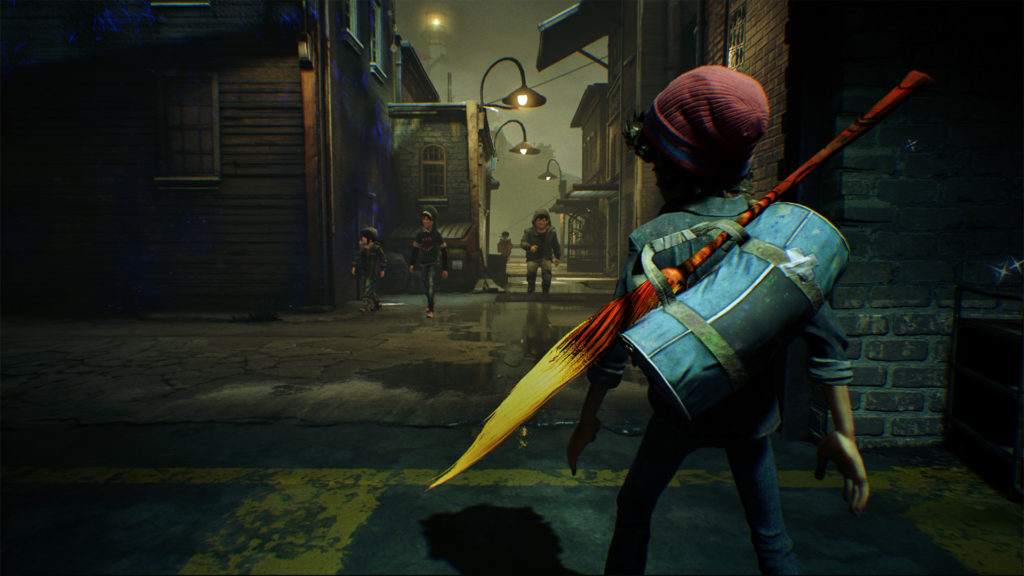
Upon arriving at the lighthouse, Ash has an experience that ends with him wielding a magical paintbrush and being tasked with putting his sketchbook back together and bringing life back to Denska. To do this he will need to paint pictures all around town using the pages he finds from his book as inspiration. As he collects pages he begins to unlock a variety of landscapes that he can use to spruce up Denska. These range from trees and grass to the sun and stars and some can be absolutely beautiful at times. As art is added to walls and buildings, light strands will begin to illuminate in the area, and a new section of town will unlock once enough of these have been lit up. Then this process repeats until enough light has returned to Denska and Ash is able to create a “masterpiece” painting in each of the game’s three main areas.
These landscape murals aren’t the only things Ash paints in Concrete Genie either. As the title hints at, he’ll also be creating creatures called genies. These genies aren’t simply artwork though, as they serve a greater purpose in Ash’s world. He will need to use them to solve simple puzzles throughout Denska, usually as ways to open new paths forward. There are three types of genies, with each used to solve a different kind of puzzle. Red genies can burn tarps, yellow genies can generate electricity, and blue genies can create wind. Genies can only be created in specific areas and are automatically designated a color/type taking much of the guess work out of which kind will be needed in that area. While a genie type can’t be chosen at will, as Ash finds more pages from his sketchbook a number of customization options such as new bodies, tails, horns, and more will become available to outfit his genies with.
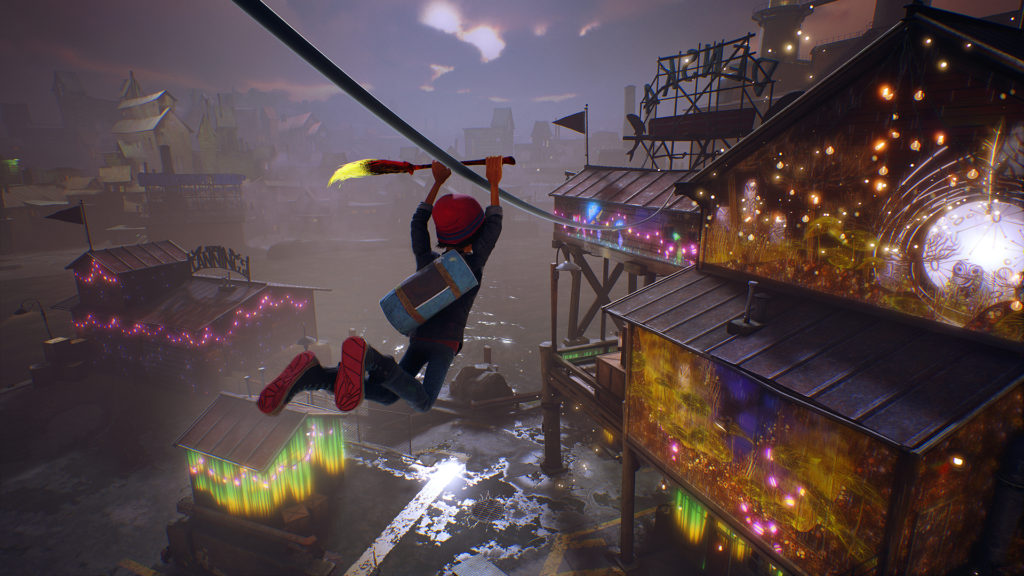
Ash’s main focus in Concrete Genie is painting and this is a pretty straightforward endeavor. Each painting starts by choosing one of the many landscape or genie pages found throughout the game and with each stroke of the brush an image inspired by the page will appear on Ash’s chosen canvas. There are slight changes to what is laid down by the brush based on how long each stroke is and mixing and matching landscapes is possible, but overall it’s a simple process that doesn’t allow for much real artistic freedom.
Painting using the Dualshock 4 can be done with or without motion controls. Holding down the R2 button will begin the paint process and, depending on the chosen control scheme, moving either the controller itself or the right stick will emulate brush strokes. Concrete Genie was clearly made with motion controls in mind and while I found both ways were intuitive and worked just fine, after the first couple of chapters I switched off motion controls and never looked back. Precision is never technically needed, as the game doesn’t care what Ash has painted just as long as something was painted in the locations that needed it. Still though, I felt I could be slightly more precise using the right stick than I could with motion controls and overall it just felt more comfortable.
Unfortunately, this painting mechanic never clicked for me, in the sense that I quickly ended up getting bored with it. I was given dozens of landscape pages to use to express myself, but only a couple felt satisfying to paint with. Aside from the first few instances, each time I started a new painting section it felt exactly the same as the last and eventually it just felt more like busywork that I had to do rather than actual creativity. This was even more apparent to me when it came to the creation of genies. There are so many parts to collect, but in the end they felt like they offered only very minor differences, and by a point, I had a hard time creating genies that I felt were truly unique. I knew this game was never going to make me feel like I was an actual artist, but I was still left disappointed in what it did end up offering.
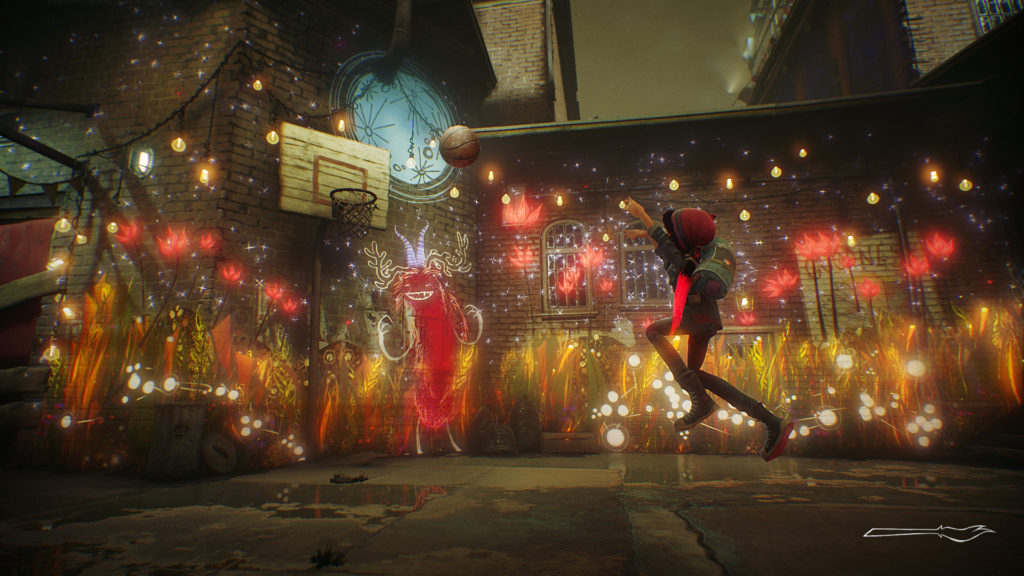
When Ash isn’t painting, he’ll be spending his time trying to avoid those bullies in more action-adventure style gameplay. It feels somewhat similar to the Uncharted games (without all the machine guns), as he’ll be platforming around town, going from rooftop to rooftop, and climbing all number of structures to reach new areas and escape the bullies. If Ash does happen to get caught by the bullies or miss a jump, the punishment for “death” isn’t harsh at all. He’ll always start from the last safe place he was, and at worst, may need to retrieve his lost paintbrush.
This painting and platforming structure is how Concrete Genie plays for the majority of its six to eight hour length, but about three-quarters of the way through, the gameplay gets turned on its head. I can’t go into much detail without spoiling some of the story bits, but it ends up going from a game about painting to one about fighting. While this new focus on combat does mix things up, the result felt mostly like tacked on filler. Some parts in this final section were so tedious that it actually had me longing for the return of the boring painting.

I didn’t hate my time with Concrete Genie. I can’t say I particularly liked it either and was left massively disappointed. Painting was interesting the first few times, but eventually ended up feeling like boring busywork. The platforming and exploration is fine, but if that’s what I wanted out of a game, there are dozens of other ones that do it far better. The ending’s focus on combat left me scratching my head and wishing I could just go back to the painting. That said, Concrete Genie does offer up some beautiful imagery at times, has mechanically sound gameplay, and delivers an important, if a bit cliché, message about bullying and friendship. Unfortunately, with all of its other shortcomings, that just isn’t enough for me to wholeheartedly recommend it.

